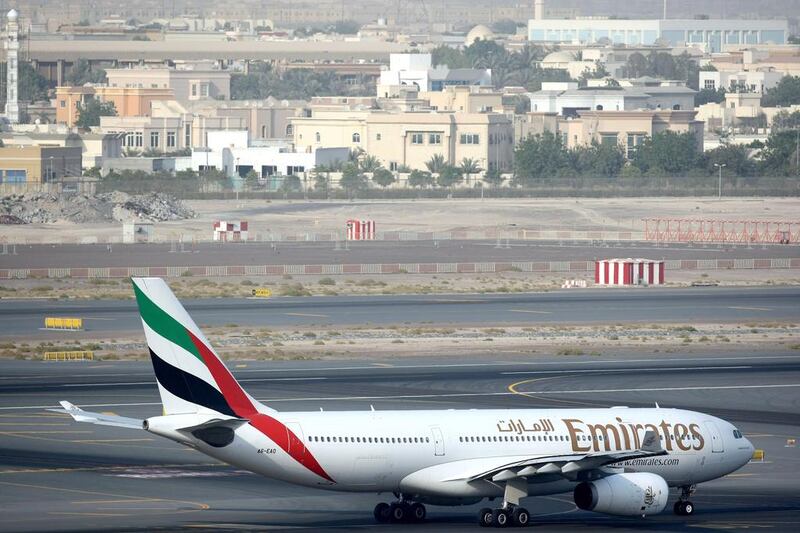Dubai International Airport will need to find a way to use both of its runways simultaneously if it is to avoid exceeding its capacity as traffic grows rapidly over the next few years, according to the UAE’s aviation chief.
"Dubai airport has some limitations on the number of planes coming within one hour, this causes the traffic in the air," said Saif Mohammed Al Suwaidi, director general, General Civil Aviation Authority (GCAA) at the Global Aerospace Summit in the capital.
“If they manage to solve the runway capacity there [they] won’t have a problem — to be able to utilise both runways simultaneously at the same time, because right now they cannot do it.”
Currently the two runways at the airport are too close to each other, prohibiting the usage of both at once. It could take up to three years to find a solution, according to Mr Al Suwaidi.
Saj Ahmad, the chief analyst at StrategicAero Research, said Mr Al Suwaidi was referring to the possibility of utilising “mixed mode operations, where both runways are used at the same time for landings and takeoffs”.
Rapidly expanding airport hubs in Dubai, Abu Dhabi and Doha are grabbing market share from longer-established rivals in Europe as more long-haul air traffic is routed through the Arabian Gulf.
Dubai International Airport recorded an 11.7 per cent spike in passenger traffic in February to more than 5.675 million. That represented the seventh consecutive month of double-digit growth.
Last week, Dubai International overtook London’s Heathrow as the largest airport in the world in terms of the number of international passengers for the first two months of the year.
Already some carriers including Qatar Airways are moving some operations to the new Al Maktoum airport in Jebel Ali as Dubai International nears full capacity.
The International Air Transport Association (Iata) warned on Monday that Gulf airspace faces gridlock unless more military airspace is given over to civilian use. Right now, between 40 and 60 per cent is reserved for the military, according to Iata.
Mr Al Suwaidi said that the problem of limited airspace will continue to challenge the UAE, but the aim is to mitigate it.
“The UAE is a very small country and the growth is double-digit. No way you can solve this problem. No way,” said Mr Al Suwaidi. “[In the] UK they have problem with Heathrow that’s why they use the slot [system], but one day we will face this issue,” he said.
On Monday, Mr Al Suwaidi said the GCAA was in talks with the European Union for a collective agreement over Emirati companies' investments in the European aviation sector. No breakthrough has been made to date on this issue, he told Al Ittihad.
A spokesman for Siim Kallas, the EU commissioner for transport policy, said on Friday that the commission was looking at a number of non-EU investments in European airlines, including Etihad's stake in airberlin and a possible investment into Alitalia by the Abu Dhabi carrier.
selgazzar@thenational.ae
Follow us on Twitter @Ind_Insights





